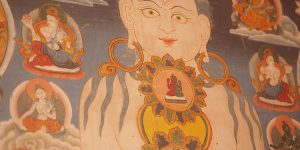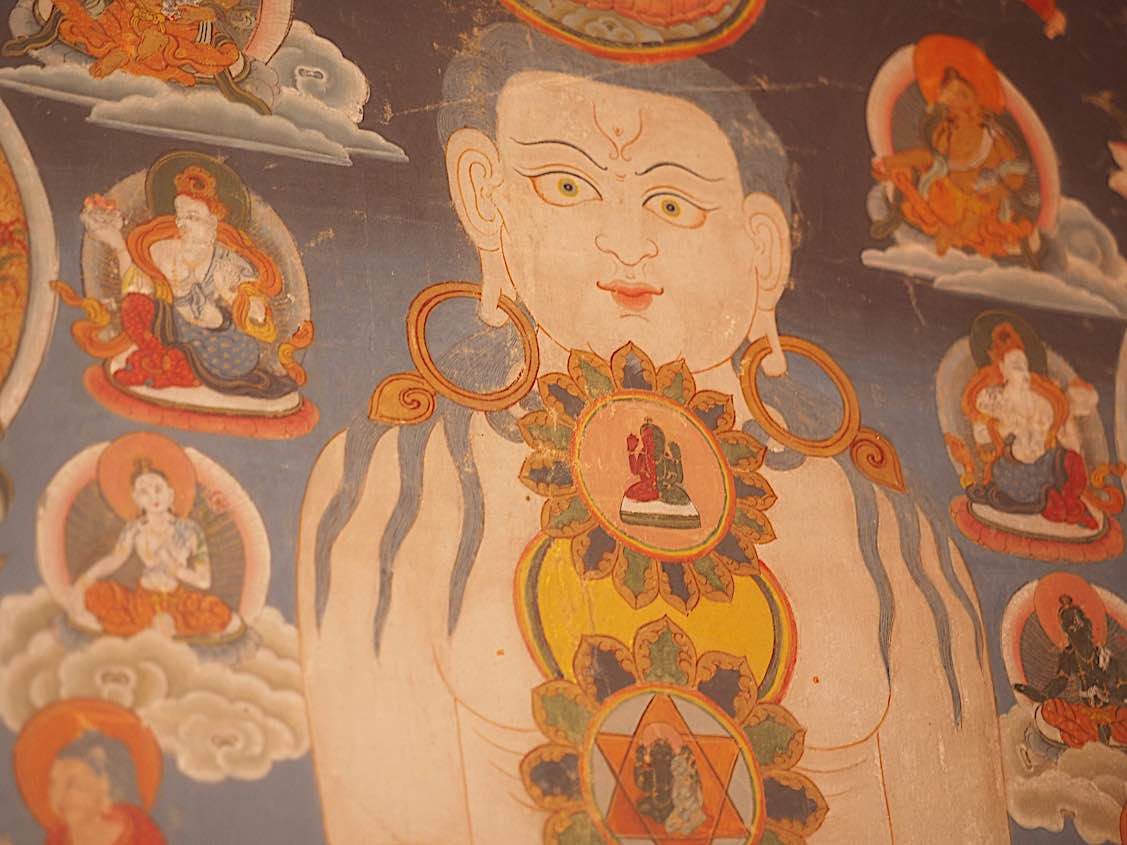Why do Buddhas and Enlightened Beings need offerings? The simple answer: they don’t. The better answer is…
Nothing confuses people interested in Buddhism — or new to the Dharma — more than the topic of offerings. It seems counter-intuitive from a “western” point-of-view. Buddhas have gone beyond all attachment, cravings or even the sense of “self” and “other” so why would an Enlightened Being appreciate an offering of fruit, incense, water, or a more elaborate Tsog feast. In fact, many teachers say, if you have time for no other practices, the two you should consider undertaking would be: offerings and meditation.
“The offering is not because the Buddhas need it or want it,” Venerable Zasep Rinpoche explained. “The offering is for you, an opportunity for you to create merit, good karma.”
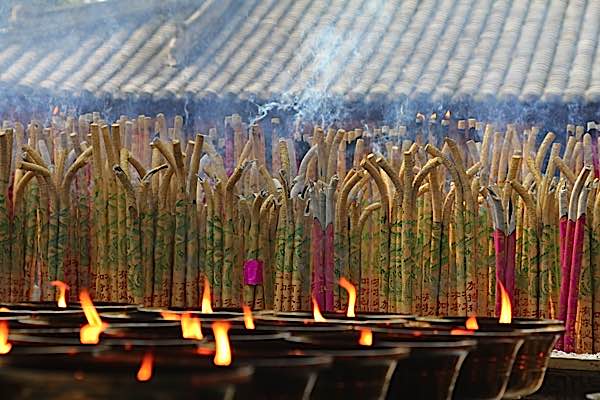
Nor is this just symbolic. Many people try to rationalize them that way, as metaphors and symbols — but they are much more than that. They are an important foundation practice for Buddhists, so much so — in some Tibetan schools — the basic foundation includes offering 100,000 water bowls to the Buddhas.
Offerings as “remedy”
In Buddhism, practices such as “offerings” and “prostrations” are sometimes seen as “remedies.” The metaphor of the healer/doctor is often used in Buddhist teachings: Buddha as the doctor, Dharma as the medicine, Sangha as the “supportive” team. In that metaphor, offerings are a remedy for our lifetime of “greed” and “attachment” in the same way that bowing or prostrations are a remedy for “pride” and “ego.” Ego and attachment are two of the biggest obstacles to Buddhist realizations. These two simple remedies are perfect ways to help overcome these issues (in Buddhism, often called “afflictions”, another medical metaphor.) [For a feature on the practice and benefits of prostrations, view this earlier feature>>]
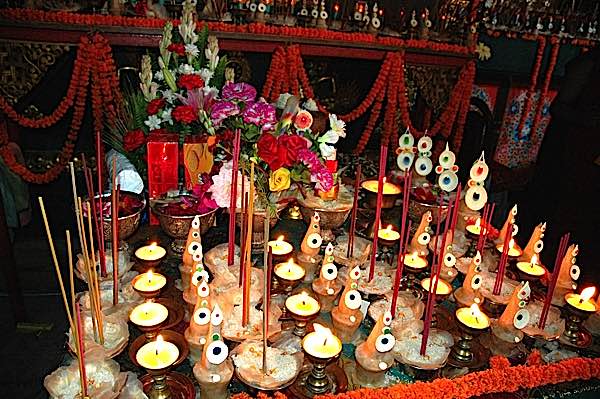
Over simplifying is always dangerous, but from the point of view of someone new to Buddhism, we are usually taught foundation practices in the beginning with two purposes in mind. In Tibetan Buddhism, this is very carefully outlined in precious Lamrim teachings, which include the topic of offerings.
Two purposes of foundation practices
If you simplify the purposes of the foundations they could generally be categorized as:
- Creating merit
- Purifying negativities.
These two aspects, the positive and negative, creating good karma, and purifying negative karma, are with the view of removing the obstacles to successful practice. To obtain realizations in our meditations, we need a calm mind, free of clinging, stress, anger and other afflictive emotions.
Simply put, offerings give us a precious opportunity to create merit. Even if the Buddha doesn’t need incense, we need the act of offering to start to “work out” our past “selfishness.”
If the fruit and incense offerings bother you, conflict your practice, then several teachers have recommended instead making an offering in the Buddha’s name to various charities. The point is to overcome the clinging and selfishness and greed by acts of giving and selflesness.
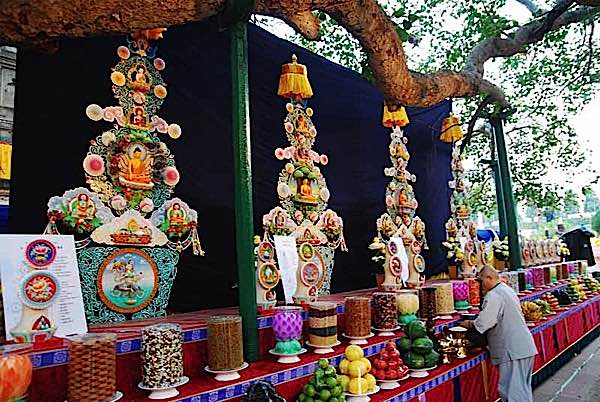
An offering to the yourself — your own Buddha Nature
The offerings are also implicitly — and explicitly — an offering to our own Buddha Nature. It’s implicit, of course, because in Mahayana Buddhism we are taught that we all have Buddha Nature. All sentient beings have the future potential to become a Buddha. Animals, insects and even criminals have the same Buddha Nature. When we make an offering to the Buddha — any Buddha — we are make offerings to ourselves and also to all beings, because we all have Buddha Nature.

Explicitly, because in advanced practices, in sadhanas (guided meditation practices), we are taught to visualize ourselves as Buddhas — as our own Buddha Nature ripened in the future to become a perfect Buddha. In the sadhanas we explicitly make “offerings to yourself as Buddha.” It can’t be more explicit than that. The role playing, including the offering to ourselves, is “training” of a sort.
To bring back the medical metaphor: ourselves as intern Buddhas.
Water bowl offerings
In Lamrim, we learn to make water bowl offerings. In fact, we are asked to — over a period of time — make 100,000 water bowl offerings. The great wisdom of this practice is that over the course of the year, or two, that we make these offerings, we gradually come to appreciate and understand the practice. Water bowl offerings are very special and precious and normally tied to a small performance of sound and action (mantra and mudra). [For a full how-to on Water Bowl offerings, see this feature>>]
Offerings continue throughout all our Dharma practice. In fact, as we move to more advanced or devoted practice, the offerings become much more elaborate.

More articles by this author
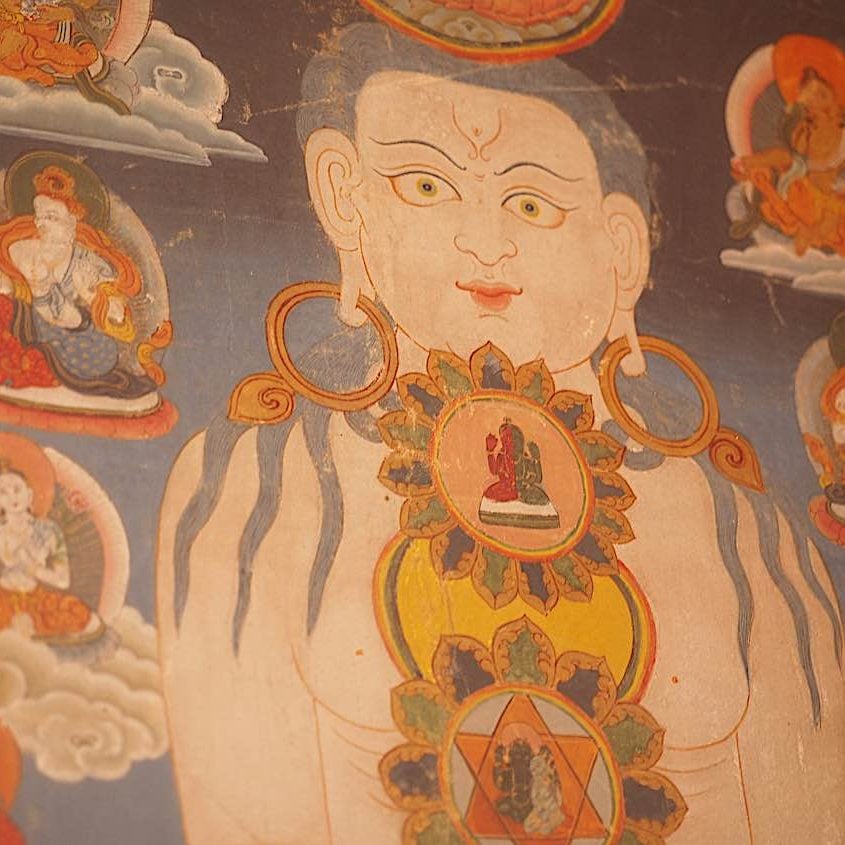
Buddhist body mandala practice in Vajrayana Buddhism — and riding the winds of the inner body “The prana goes where the mind goes.””

4 Guardians of the World and Dharma: the Watchers of the World: the Four Heavenly Kings in Buddhism, Their Mantras and Practice
Search
Latest Features
Please support the "Spread the Dharma" mission as one of our heroic Dharma Supporting Members, or with a one-time donation.
Please Help Support the “Spread the Dharma” Mission!

Be a part of the noble mission as a supporting member or a patron, or a volunteer contributor of content.
The power of Dharma to help sentient beings, in part, lies in ensuring access to Buddha’s precious Dharma — the mission of Buddha Weekly. We can’t do it without you!
A non-profit association since 2007, Buddha Weekly published many feature articles, videos, and, podcasts. Please consider supporting the mission to preserve and “Spread the Dharma." Your support as either a patron or a supporting member helps defray the high costs of producing quality Dharma content. Thank you! Learn more here, or become one of our super karma heroes on Patreon.
Lee Kane
Author | Buddha Weekly
Lee Kane is the editor of Buddha Weekly, since 2007. His main focuses as a writer are mindfulness techniques, meditation, Dharma and Sutra commentaries, Buddhist practices, international perspectives and traditions, Vajrayana, Mahayana, Zen. He also covers various events.
Lee also contributes as a writer to various other online magazines and blogs.






